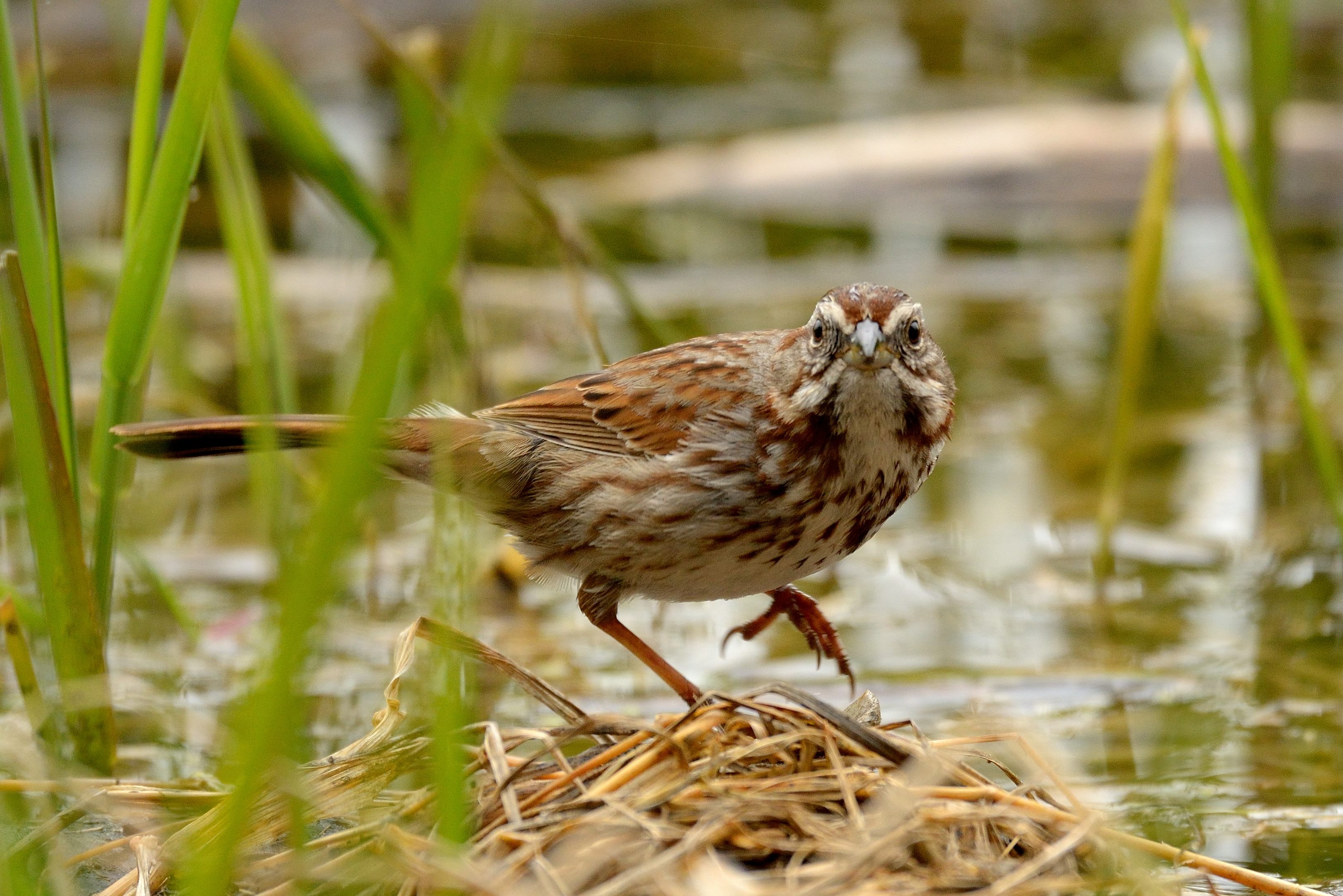By Jaime Stephens and Sarah Rockwell, Klamath Bird Observatory
Linked paper: Short-term riparian restoration success measured by territory density and reproductive success of three songbirds along the Trinity River, California by J.L. Stephens and S.M. Rockwell, The Condor: Ornithological Applications.
Concerns about endangered salmon, compounded with the impacts of dams and climate change on river ecology, have led to a number of river restoration projects in the western United States. To understand the impact of restoration efforts, one of the things we can do is study the wildlife that lives in these human-restored habitats.
The Trinity River Restoration Program, a multi-agency collaboration with the Bureau of Reclamation, is implementing a large-scale restoration project along a 64-kilometer stretch of California’s Trinity River to improve fish habitat by removing hardened river banks, creating more complexity in the stream channel, and managing flows to mimic spring flooding. Repairing the habitat in the stream channel requires removing the native riparian vegetation along the banks. After the work is done, the vegetation is replanted, but the development of that new riparian habitat will likely take decades. Researchers from Klamath Bird Observatory completed a field study to evaluate the short-term effects of instream restoration on the birds that live in the vegetation along the river’s edge.

Over the first decade, as the new riparian plants grow and mature, the goal of the upland restoration is to minimize harm to the wildlife that lives there. We studied three bird species associated with different components of riparian habitat – Song Sparrows, Yellow-breasted Chats, and Yellow Warblers. From 2012 to 2015, Klamath Bird Observatory researchers led a team of interns who started work at dawn and spent long summer days locating nests of each species. We followed individual birds in the field, marking their territories on maps and watching for behavioral cues that would lead us to each nest. Once we located them, we observed nests every few days to determine whether they were successful, recording how many young birds (if any) fledged from each nest. We did this at restoration sites, and also at intact, mature riparian habitats that served as reference sites for comparison.
We found that bird territories were generally larger and fewer (less dense) in restored areas than in the intact riparian habitat. This was most pronounced for the Yellow-breasted Chat, a species especially dependent on a well-developed shrub layer, which had a nest density twice that at the intact sites compared to the restoration sites. However, we did not find any differences in reproductive success between the restored and reference sites, for any of the three species. We consider this to be evidence of restoration success in the short term: although the new habitat supports fewer individuals, those individuals are breeding successfully. Over time, as the restored vegetation grows larger and more complex, we expect to see the number of individuals at restored sites become similar to the reference sites.
Our research is particularly important in demonstrating the link between instream river restoration and the adjacent upland habitats. Although these systems are inherently connected, this can be easily overlooked without a strong team of researchers and restoration practitioners working together. Endangered salmon and water shortages are prominent environmental issues in the western United States. As we look to rebuild the integrity of those systems, we would be remiss to not also seek out opportunities to benefit at-risk terrestrial birds and other wildlife.
About Klamath Bird Observatory: Based in Ashland, Oregon, KBO is a scientific non-profit organization that achieves bird conservation in the Pacific Northwest and throughout the migratory ranges of the birds of our region. Emphasizing high-caliber science and the role of birds as indicators of ecosystem health, KBO specializes in bird monitoring and research projects that improve natural resource management. Visit us at www.KlamathBird.org.
